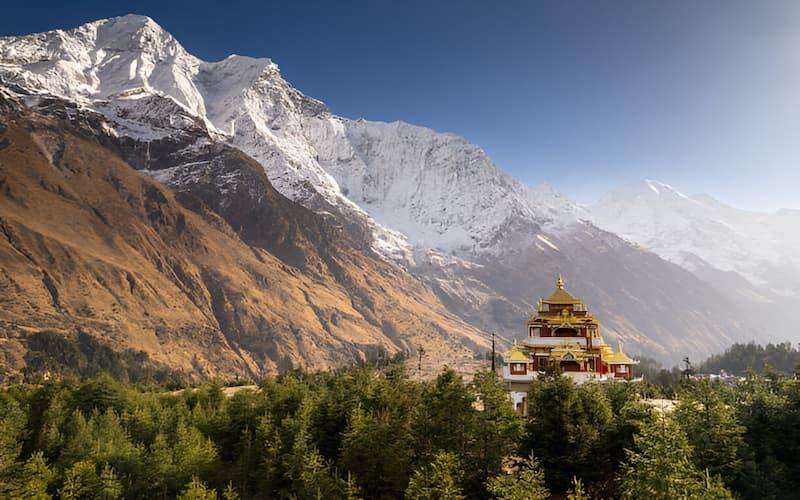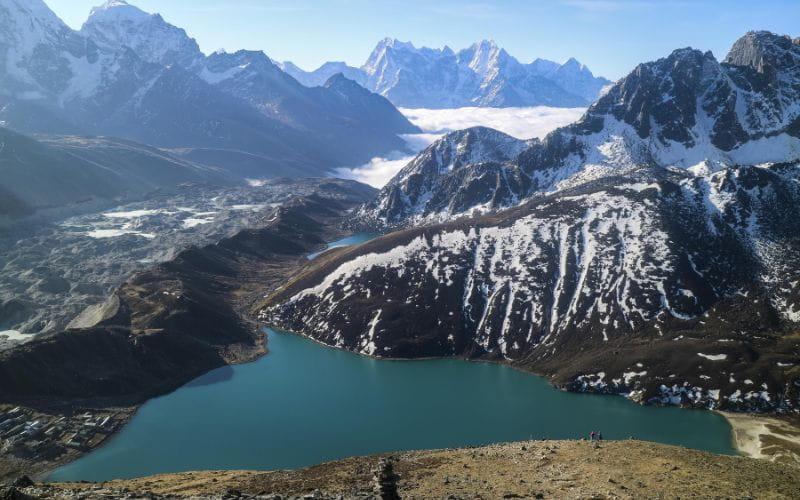Best Time to Visit Nepal for Adventure Travelers

Nepal, home to the mighty Himalayas, calls out to adventure seekers from all over the world with its high peaks, tough trekking paths, and heart-pounding activities. This small but geographically diverse country has everything from world-class mountaineering trips to white-water rafting, paragliding, and jungle safaris. If you're planning your trip to Nepal through Nepal Holiday Packages for UAE residents or on your own, the right time to go can make the difference between an amazing adventure and a tough fight against the weather. To figure out the best time to visit Nepal, you need to think about things like the weather, the trail conditions, the visibility, and the specific activities you want to do. This will make sure that your Himalayan dreams come true in the best possible conditions.
Here are The Best Time to Visit Nepal for Adventure Travelers

Spring Season: Peak Adventure Time (March to May)
Most adventure travellers say that spring is the best time to visit Nepal because of the great weather, clear skies, and beautiful natural scenery. During these months, temperatures at lower elevations become pleasantly warm, while at higher elevations they stay manageable. The rhododendron forests burst into beautiful blooms, covering the hillsides in red, pink, and white. This made for a beautiful backdrop for hiking trips. In April and early May, visibility is at its best, giving you clear views of the Himalayan giants like Everest, Annapurna, and Dhaulagiri. This time of year, the most people hike popular routes like the Everest Base Camp Trek and the Annapurna Circuit. This makes for a lively trail community where adventurers from different cultures share stories around teahouse fireplaces.
Autumn Glory: The Golden Window (September to November)
Autumn is almost as good as spring for visiting Nepal, especially for hikers who want stable weather and great views of the mountains. After the monsoon season, the air is very clear because months of rain have washed it clean. The weather is still good for high-altitude trekking, with warm days and cool nights making for great hiking. After the monsoon, the landscape is full of green plants at lower elevations, and the peaks are covered in snow and shine brightly against the deep blue sky. October is the busiest month on Nepal's trekking trails because it has some of the most reliable weather patterns of the year. Adventure sports like paragliding in Pokhara are at their best in the fall when the weather is perfect for flying and the views of the Annapurna mountains are stunning.
Monsoon Adventures: The Road Less Traveled (June to August)
The monsoon months are usually thought of as the off-season, but they offer unique chances for adventurous travellers who are willing to brave Nepal's wet season. Upper Mustang, Dolpo, and parts of Manaslu are in rain-shadow areas, which means they stay relatively dry. This makes them great places to trek when other areas are getting a lot of rain. These far-off places have cultures influenced by Tibet and stunning desert-like landscapes. They offer culturally rich adventures away from the crowds. During the monsoon season, rivers swell with rain, making for exciting rapids that are best for experienced rafters. Mountain bikers love muddy trails because they are hard but rewarding. The lush, green landscapes that are photographed during this time of year have an otherworldly quality. But leeches, slippery trails, and not being able to see the mountains well mean you need to have realistic expectations.
Winter Expeditions: For the Hardy Adventurer (December to February)
Most travellers don't think of winter as the best time to visit Nepal, but it can be great for some adventures and tough explorers. Lower-elevation hikes like the Poon Hill circuit, the lower parts of Langtang Valley, and Annapurna Base Camp are still open and fun, with a lot fewer people and very clear skies when the weather is good. The jungle safaris in Chitwan and Bardia National Parks in the Terai region are especially nice in the winter when the weather is mild and there is less vegetation, making it easier to see animals. Adventure sports like bungee jumping, zip-lining, and canyoning around Pokhara go on all year, but winter is the best time because the weather is clear and cool. But high-altitude passes often close because of snow, and temperatures drop a lot at high altitudes, so you need the right gear and a realistic plan for your route.
Seasonal Considerations for Specific Adventures
The best time to do different adventure activities may not be the same as the best time to go trekking in general. Spring and fall are the best times to go on peak climbing trips to mountains like Island Peak or Mera Peak. Everest Base Camp trips usually take place in April-May and September-October, when the weather is good for trying to reach the top. The best times to go paragliding in Pokhara are in the spring and fall, but winter mornings are also great. During the winter, when animals gather around water sources and grass stays shorter, jungle safaris are better for seeing animals. There are rock climbing and mountaineering classes all year long, but spring is the best time to learn because the weather is mild.
Weather Patterns and Regional Variations
Understanding Nepal's microclimates helps optimize adventure timing. The eastern regions generally receive more precipitation than western areas, affecting trek planning. Higher elevations keep snow cover for longer, and some passes stay closed until late May. During the monsoon, the Annapurna region is usually a little wetter than the Everest region. The temperature changes between day and night get bigger as you go higher up and in the fall and winter, so you need the right gear no matter when you go.
Booking and Planning Considerations
From a practical point of view, the best time to visit Nepal also depends on the availability and cost of accommodations. During peak seasons (March to May and September to November), you need to book ahead for popular trekking routes because teahouses fill up quickly. During these times, there is more demand for domestic flights to mountain airports, and delays caused by bad weather are more common. Shoulder and off-seasons, on the other hand, have better deals and more options, but the weather is less predictable.
Conclusion
When is the best time to go to Nepal? It depends on what you want to do, how fit you are, how much money you have, and how much you can handle changing weather. Spring and fall are without a doubt the best times for most adventures because the weather is nice and the scenery is beautiful. But the monsoon and winter seasons offer unique experiences for people who want to be alone, learn about other cultures, or do certain activities. When you book a trip to Nepal or choose a Nepal holiday package, make sure that your travel dates match your adventure priorities. This will make sure that your trip to the Himalayas gives you the life-changing experience you want in some of the most beautiful places on Earth.
- Art
- Causes
- Crafts
- Dance
- Drinks
- Film
- Fitness
- Food
- Spiele
- Gardening
- Health
- Startseite
- Literature
- Music
- Networking
- Andere
- Party
- Religion
- Shopping
- Sports
- Theater
- Wellness



